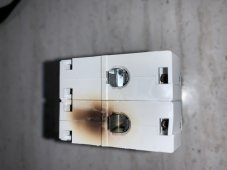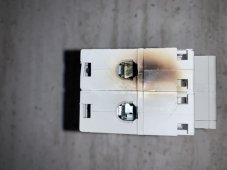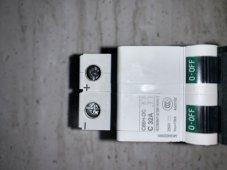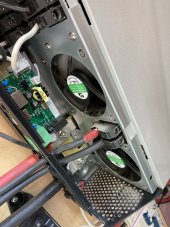I am not going to use these ferrules in the replacement breaker.
I just made a new end with a short piece of the same wire I had laying around. Put on a new ferrule and tightened it down on the old breaker using one of the good connection points. I cranked it down as hard as I could using a large screwdriver. I’m pretty sure it was tightened down well over 10 foot pounds at the very least.
I was able to pull the wire completely out of the ferrule using some significant force but still, it came cleanly out. This should not have happened and didn’t give me a good assessment of the crimper I used so I certainly do not recommend using an inexpensive crimper. Actually, it’s going in the garbage.
I retested with bare wire and I can not pull it out by hand to save my life.
I realize that this was probably an extreme test and one that these connections would never actually be subject to since everything is tied down and secure but it still gave me great pause.
Mostly, I wanted to see how much I could crank the screws down before I broke anything. The answer to that is as hard as you can.
Lesson learned here and I’ll be taking the rest of the ferrules off. Not because I don’t trust the ferrules but because I don’t trust the crimper that was used.
Thanks everyone for the recommendations and enlightening me about the dangers of cheap breakers. I’m going to purchase a high quality crimper and revisit this test to see what happens.
Might make an interesting video for
@Will Prowse to review using cheap crimpers and tools instead of quality ones. I think he would have a lot of people buying off his affiliate links. I know I would.
Edit: Just ran the test four more times and twice the ferrule came off the wire and twice the ferrule came out of the connector along with the wire. I could not pull a bare wire out of the connector unless I used a vise. And even then, the wire was flattened leaving much more surface area for contact then what using a ferrule provides.








